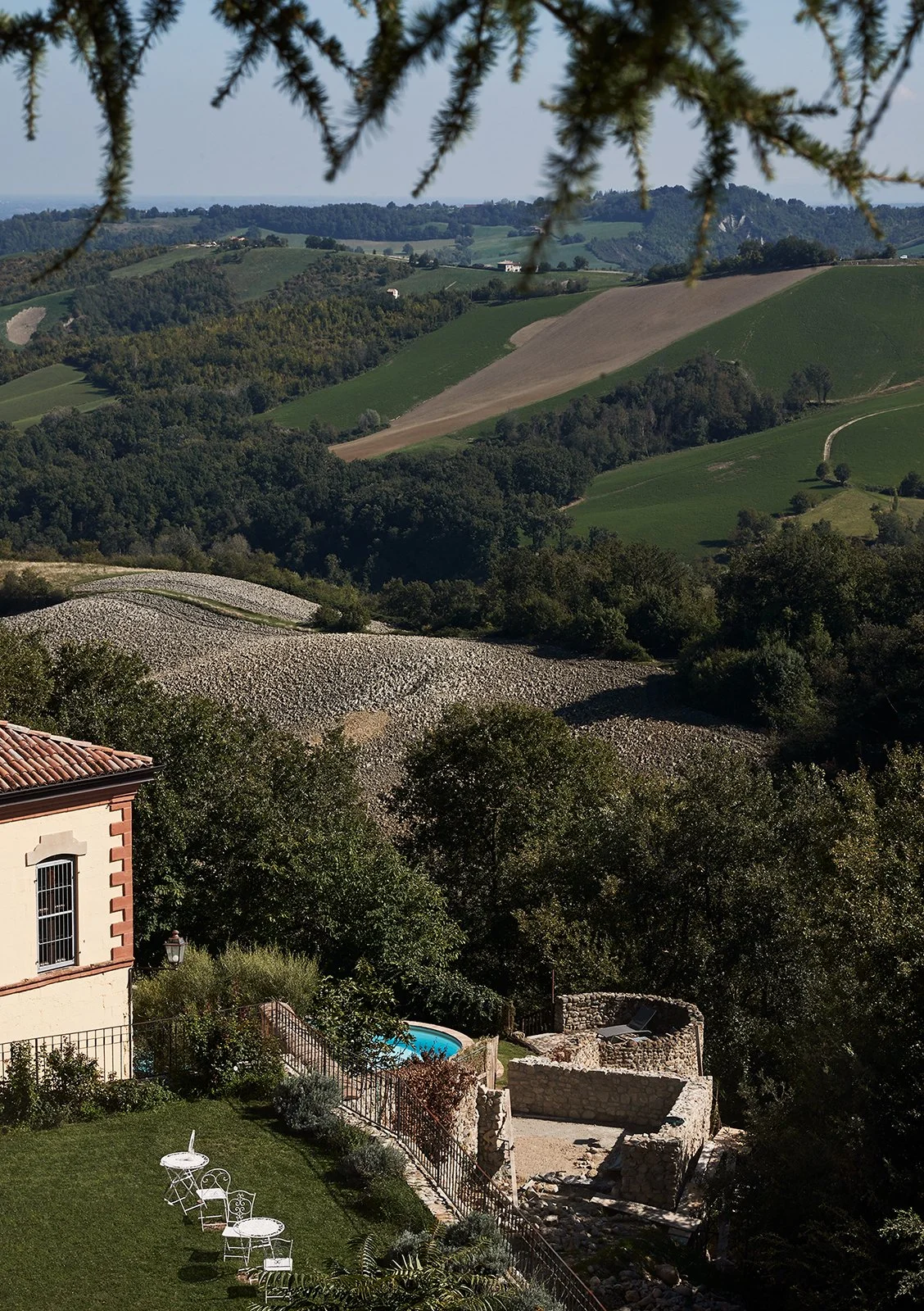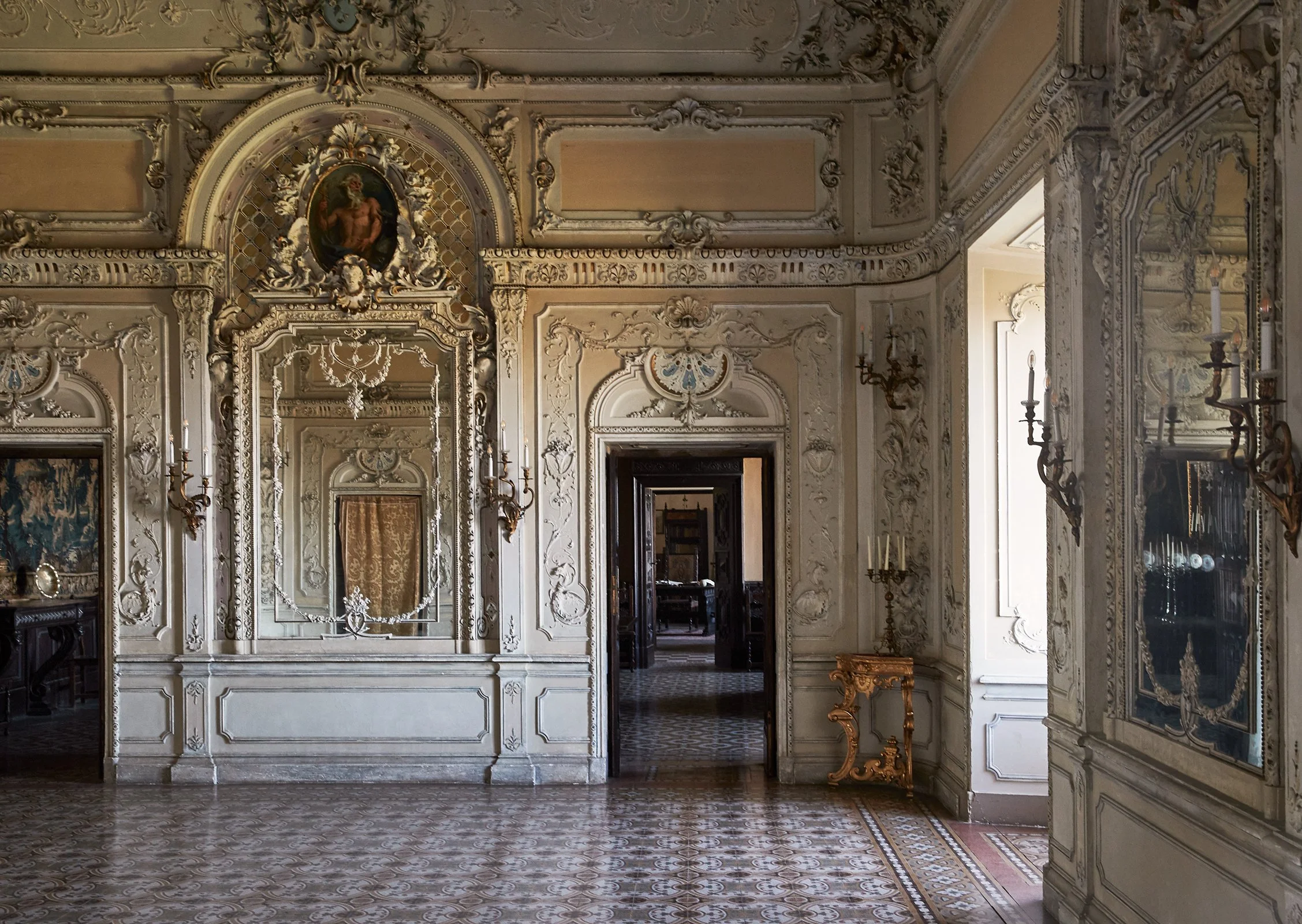The Castle with Three Lives / Antico Borgo di Tabiano Castello
Not far from Parma, Antico Borgo di Tabiano Castello is shaped by its fascinating history, summarized in three distinct eras: Its first purpose was as a military stronghold, then a culinary centre in Emilia’s landscape, as producer of wine and cheese, and finally today, it’s known around the world as a charming boutique hotel.
The current castle dates to the 11th century, which still defines much of its exteriors, and was built on the ruins of a Roman settlement. For a long time, it was the military stronghold of the Pallavicino family, which dominated the area during the centuries of struggle between the Imperial and Vatican forces.
Arriving to the hotel can be a confusing experience, as you wonder where exactly the hotel is. The answer is that it’s all around you: Below the castle is a 500-years old village, and until only 50 years ago, it was full of ordinary life, people working and living in the charming stone houses.
But in the mid-20th century, many people in rural Europe felt the pull from larger towns and cities, leaving behind their old homes.
Still today, it’s possible to find many nearly deserted villages in countries like Italy, France, and Sweden. City life was modern and convenient, and it was easier to make a life for oneself. And one by one, the houses below the castle were deserted.
Since 1882, the castle has been owned by the Corazza family. In 2005, two siblings of the Corazza family had the idea to transform the village into a relais de charme.
Every three years since then, they have added a new house to the hotel. At the end of 2025, twelve new rooms will open at the top floor of the castle.
When speaking about the history of the house with another of the Corazza siblings, she summarized her view of the castle:
“The house can be viewed from two different perspectives; one is that historically, this was one of the most strategic military fortresses in Emilia in the Middle Ages. It was the most important castle of a very powerful man, belonging to the family Pallavicino. The second aspect is that this is – at the same time – a family house, we live here. Both exist together, side by side; it’s a historically significant building and a place where we live our everyday lives.”
Even before the purchase, the Corazza family lived in the region, though they initially came from Switzerland. When Carlo Gatti, the great, great grandfather of the original owners, was a child, he had no apparent talent for studies, and so he left his home, in the village of Marogno in the Ticino Valley, and went abroad, looking for work. After some years of struggling in Paris, he ended up in London, where he came up with the idea of selling ice cream at a low price.
Before Gatti, ice cream had been a treat reserved for society’s elite. Gatti has been credited for making ice cream available for everyone, essentially democratizing it. He charged just a penny and called his ice cream “penny ice”. It was a costly venture; he had to import ice by ship from Norway and an ice cream machine from France, but he was successful and became known as “the Ice Cream king” as he distributed ice cream all over London.
He helped numerous people from the poor region of Ticino to emigrate, making a living working in his businesses, and eventually he returned to his home region, where he worked as a politician, to improve the life of the people there.
His daughter and her husband, Rosa and Giacomo Corazza-Gatti, discovered the castle and used her inheritance to buy and restore it, as it was very worn down. Their idea was to bring their five children here, not only because of the beautiful Emilian landscape, but because of the strong winds around the castle, perched on a hill; the air was healthy and fresh.
This was the beginning of the second era of the castle, as Giacomo Corazza ran his own agricultural estate. Traces of this is still visible today – the hotel’s restaurant is L’Antico Caseficio (and also open to non-guests), located in the old dairy and cheese factory.
Until recently, it produced both butter and Parmigiano Reggiano. The original features, from the floor tiles to the windows, have been preserved, but the place where the butter was made has since been transformed into the restaurant’s kitchen. The dishes are made from local products with ingredients from the castle’s garden, and the cuisine reflects the traditions of Emilia. Jams are homemade and the eggs come for the castle’s chicken coop.
The transformation into contemporary hotel has not always been easy. The process has at times been painstakingly complicated, as the family were adamant that the original authenticity and charm should be preserved, but with all the comforts of the present added, without harming the natural environment. Electricity is run mainly on solar panels, as is the hot water.
When visiting, we travelled in a small group (of two), but the hotel can provide space for up to 180 guests, in case you’re planning a larger celebration, and there’s enough space to host a total of 900 event participants.
The inside part of the castle renovated in the 1880s is completely different from its exterior. It’s used for ceremonies like marriages, visits, and events. In this part, there’s a hunting room with fascinating stucco, depicting hunting dogs, wild boars, and hares. The brother of the current owners’ grandfather was an avid hunter, who would often visit the castle with his friends. After their hunts they would eat in this room, in front of the impressive chimney, made by marble from Verona.
The library is perhaps one of the most interesting of the rooms, historically speaking. It contains the remains of what was once a very famous collection, destroyed through the years by wars and family divisions. It was once considered of such cultural and historical significance that the man who put together the collection was made a nobleman by the emperor.
The kitchen is not open to the public, but should you happen to catch a glance of it, notice the blue colour of the walls, the same as the window panes in the restaurant. The reason is that in this part of the Emilian countryside, it’s believed that the colour blue repels flies! Next to it is the dining room – the family’s private dining area, where they eat together as a family or with personal guests – where in the ceiling, you can see the crests of all the families who in the past owned the castle. The most important is placed under the chimney; belonging to the family of Pallavicino, who owned a total of 18 castles.
The little red living room, next to the dining room – so called for its armchairs, even though the walls are covered in a precious golden yellow English wallpaper intact after over a century – overlooks the stunning view of the Apennines and is surprisingly warm even in winter. It’s the favourite room among many family members.
The pool area is quiet and peaceful, with great views of the surrounding landscape. It’s difficult to fathom that only a few hundred years ago, this was a place of political turmoil. A small architectural detail in the castle gives a clue to Italy’s tumultuous past: during the unification of Italy, the crest of buildings was decorated in different ways depending on whether the owner was loyal with the pope or not. What today merely looks like a shape made of bricks was not long ago an important political statement.
Once the new rooms are completed, the next step is to restore the castle’s vineyard, and yet again begin the production of white and red wines. The old wine cellar remains underneath the castle, thus far empty but in a few years, it will once again be home to large caskets of wine.










